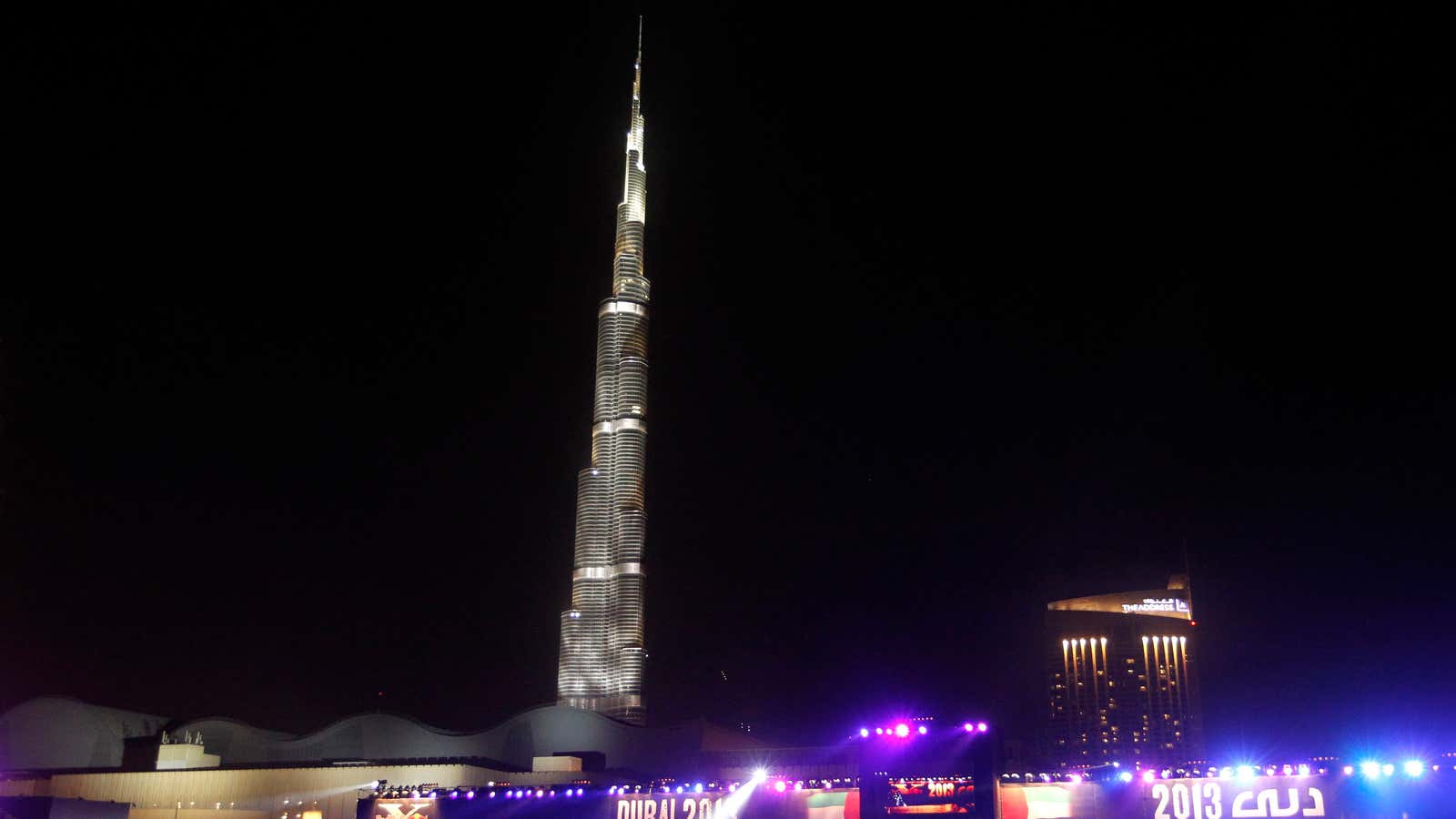When the CTF Financial Centre skyscraper is completed in 2016, it will stand at 530 meters—not the highest-soaring building ever constructed, but on the shortlist of the world’s tallest towers.
What will set the tower apart from the competition is its elevator, which will ascend at 20 meters per second. It will be the fastest elevator in the world—twice as fast as that of the Burj Khalifa, the world’s tallest tower, and nearly three times the speed you can travel up the Empire State Building.
The CTF building’s warp-speed lift is part of a trend of extremely fast elevators, motivated by a need to navigate increasingly massive skyscrapers, and enabled by technology that brings a 160-year-old engineering practice into the 21st century.
Thanks to an excellent graphic and story put together by the Financial Times, you can watch the results of this trend in real time. Here’s a video, via the FT, of the visualization in action:
As the FT explains, a lot of technology is required to ensure safety and efficiency when buildings get taller and elevators go faster. New, cutting-edge elevators make use of better motors and air pressure systems, as well as high-speed “lift buffers”—devices located in a shaft that can safely stop a plummeting elevator in an emergency—and superstrong, lightweight, carbon fiber cables.
Still, we may be just past the dawn of innovation in the elevator manufacturing industry. Lifts of the future may forego cables of any type, with the use of linear motors, and have the ability to move horizontally as well as vertically.
